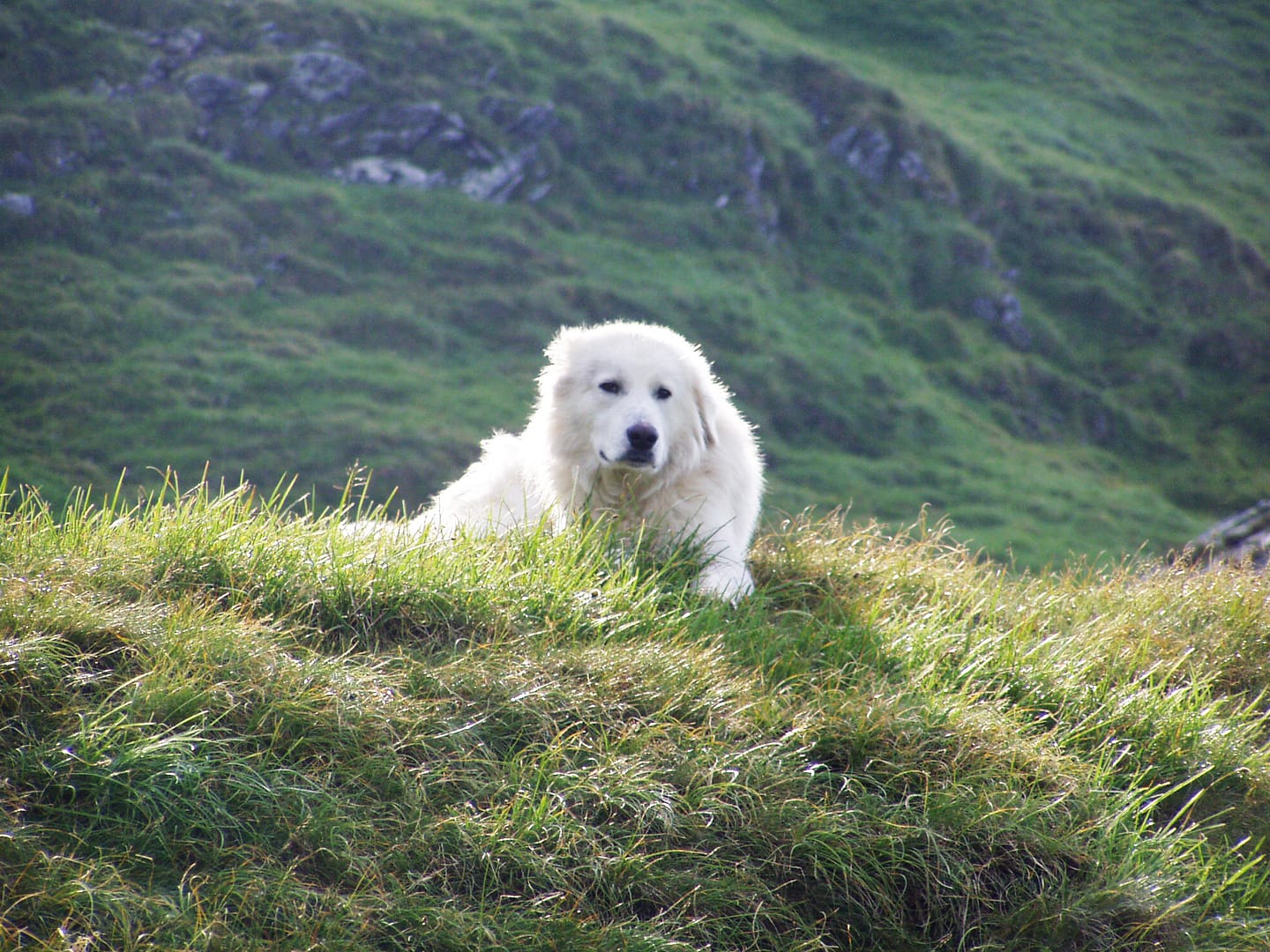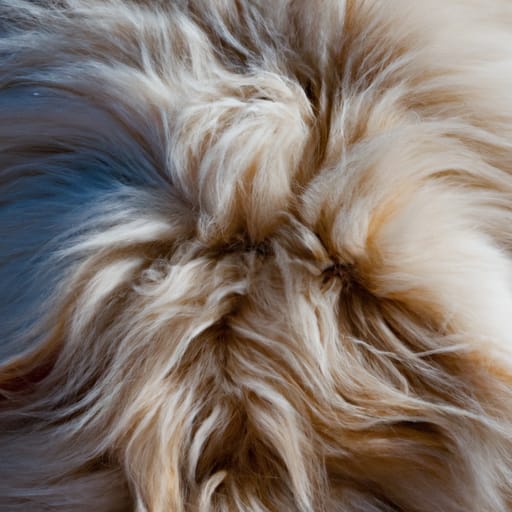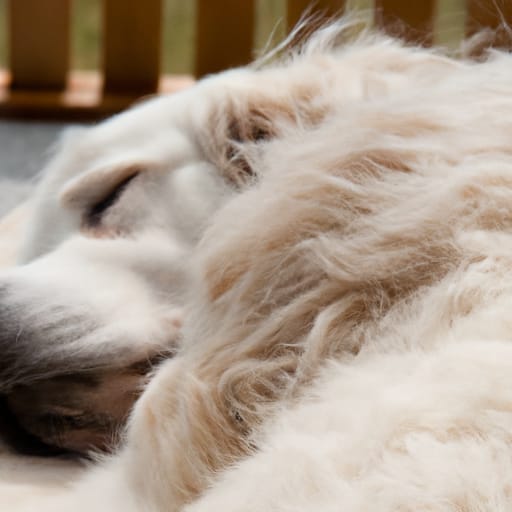Do Great Pyrenees Shed? Great Pyrenee Shedding
Do Great Pyrenees Shed? Great Pyrenee Shedding is a common concern for potential owners of this breed. In this article, we will explore the shedding habits of Great Pyrenees and provide helpful information on how to manage their shedding. You will learn about the typical shedding patterns of Great Pyrenees, factors that can affect shedding, and tips to minimize shedding in your home. By the end of this article, you will have a better understanding of what to expect when it comes to Great Pyrenees shedding and how to keep your home clean and fur-free.
Understanding the Great Pyrenees Breed
The Great Pyrenees is a majestic and beautiful breed of dog known for its calm and gentle nature, as well as its loyalty and protective instincts. Originating from the Pyrenees Mountains of France and Spain, these dogs were historically bred for guarding livestock and have a rich history spanning centuries.
Origins and History
The Great Pyrenees, also known as the Pyrenean Mountain Dog, has a long lineage that can be traced back to ancient times. They were initially bred by shepherds in the Pyrenees Mountains to protect their flocks from predators, such as wolves and bears. These dogs were highly valued for their ability to deter and confront these threats, making them an essential companion for shepherds.
Over time, the Great Pyrenees breed gained popularity outside of its mountainous origins and became a beloved companion for families and farmers. Their gentle nature and natural protective instincts made them ideal for guarding homes and properties, as well as serving as a loyal companion.
Physical Characteristics
Great Pyrenees dogs are large and sturdy, with males typically reaching a height of 27 to 32 inches at the shoulder and weighing anywhere from 100 to 160 pounds. Females are slightly smaller, measuring 25 to 29 inches in height and weighing between 85 and 115 pounds.
These dogs have a distinctive double coat that helps to protect them from harsh weather conditions. The outer coat is dense and weather-resistant, while the undercoat provides insulation and warmth. The coat can range in color from pure white to shades of gray, tan, or red.
The breed’s face is characterized by a strong, noble expression, with dark, almond-shaped eyes and a black nose. Their ears are medium-sized and triangular, often lying close to the head. The Great Pyrenees’ body is muscular and well-balanced, with a broad chest and a strong, straight back.
Temperament and Personality
Great Pyrenees dogs are known for their calm and gentle demeanor. They are generally good-natured, patient, and affectionate with their families, making them excellent companions for both individuals and families. Their natural protective instincts make them excellent watchdogs, as they are always alert and ready to defend their loved ones if necessary.
However, it is essential to note that the Great Pyrenees breed can be independent and strong-willed at times. They have a natural instinct to guard and protect, which can lead to them being wary of strangers. Early socialization and consistent training are crucial to ensure that they grow into well-behaved and balanced dogs.
The Shedding Phenomenon
An Overview of Shedding in Dogs
Like all dogs, Great Pyrenees shed as part of their natural growth cycle. Shedding is a natural process that occurs when old or damaged hair falls out to make way for new growth. It is an essential mechanism for maintaining a healthy coat and skin.
The amount of shedding can vary depending on the breed, individual genetics, and environmental factors. Some dogs may shed minimally throughout the year, while others may have more intense shedding seasons.
Factors Influencing Shedding
Several factors can influence the shedding patterns and intensity in Great Pyrenees dogs. These factors include:
- Breed: Certain breeds are known for excessive shedding due to their specific coat types. Great Pyrenees belong to the category of breeds that have a thick double coat, which generally results in a more pronounced shedding.
- Seasons: Shedding in Great Pyrenees tends to be more intense during seasonal changes. They typically shed their winter coats in preparation for the warmer months and shed their summer coats to make way for a thicker winter coat. This shedding pattern helps them adapt to changes in temperature.
- Hormones: Hormonal changes, such as those associated with pregnancy or heat cycles in females, can also influence shedding in Great Pyrenees.
- Health and diet: A dog’s overall health and nutrition can impact the quality of their coat and shedding patterns. A balanced diet and regular exercise can contribute to healthier fur and reduced shedding.
The Great Pyrenees Coat
The Great Pyrenees is known for its beautiful and dense double coat, which requires regular maintenance to keep it healthy and minimize shedding. The outer coat of the Great Pyrenees is thick, coarse, and weather-resistant, while the undercoat is soft and insulating.
The coat serves as a natural barrier to protect the dog from extreme temperatures and helps to repel dirt and moisture. However, this beautiful coat also means that Great Pyrenees tend to shed more than breeds with shorter or less dense fur.

Managing and Controlling Shedding
Regular Grooming and Brushing
One of the most effective ways to manage shedding in Great Pyrenees is through regular grooming and brushing. Brushing helps to remove loose and dead hair, preventing it from ending up all over your home.
For Great Pyrenees, it is recommended to brush their coat at least twice a week, if not more frequently during shedding seasons. A slicker brush or pin brush is ideal for removing loose hair from the outer coat and undercoat. Additionally, using a deshedding tool, such as a shedding rake or rubber grooming mitt, can help to remove excess fur more efficiently.
Bathing and Conditioning
Regular bathing and conditioning can also help to manage shedding in Great Pyrenees. However, it is important not to over-bathe your dog, as excessive bathing can strip the coat of its natural oils and lead to dry skin and increased shedding.
When bathing your Great Pyrenees, use a high-quality dog shampoo that is formulated to nourish and moisturize the skin and coat. After bathing, be sure to thoroughly rinse out all the shampoo to prevent any residue from causing skin irritation.
Using a conditioner specifically designed for dogs can help to keep the coat soft, healthy, and less prone to shedding. Conditioning helps to moisturize the fur and minimize tangles, making it easier to brush and maintain.
Diet and Nutrition
A healthy diet plays a crucial role in minimizing shedding and maintaining a healthy coat in Great Pyrenees. Ensure that your dog’s diet is balanced and provides all the necessary nutrients, including proteins, fatty acids, vitamins, and minerals.
Consult with your veterinarian to determine the best diet for your Great Pyrenees, taking into consideration factors such as age, activity level, and any specific health concerns. Providing a high-quality dog food that is rich in essential nutrients can help to promote a healthy coat and minimize excessive shedding.
Tools and Techniques for Shedding Control
Choosing the Right Brush or Comb
When it comes to controlling shedding in Great Pyrenees, selecting the right brush or comb is essential. Different types of brushes and combs are designed to tackle specific coat types and shedding patterns.
For Great Pyrenees, a slicker brush or pin brush with long, flexible bristles is generally recommended. These brushes are effective in reaching the undercoat and removing loose fur. Additionally, using a shedding rake or rubber grooming mitt can help to remove dead hair more efficiently.
It is important to use gentle and steady strokes when brushing your Great Pyrenees to avoid causing any discomfort or irritation. Take your time, especially in areas where the fur is denser, such as the neck, chest, and hindquarters.
Vacuuming and Cleaning
Keeping your home clean and free from excess fur is an ongoing battle when dealing with a shedding dog. Regular vacuuming, especially in areas where your Great Pyrenees spends a lot of time, can help to minimize the amount of loose hair around your home.
Investing in a high-quality vacuum cleaner with a HEPA filter can be beneficial in effectively removing pet hair from carpets, furniture, and other surfaces. Additionally, using lint rollers or sticky tape can help to remove fur from clothing and upholstery.
Regularly washing your dog’s bedding and using washable covers can also help to control shedding and keep your home clean.
Preventing and Managing Allergies
Great Pyrenees shedding can be a concern for those with allergies or asthma, as the fur can trigger allergic reactions. If you or a family member suffer from allergies, it is important to take measures to minimize exposure to allergens.
Regular grooming and brushing can help to remove loose hair and dander, reducing the amount of allergens in your home. Using products specifically designed to neutralize pet dander can also be helpful.
If allergies are a significant concern, consult with an allergist or veterinarian to explore additional strategies, such as allergy medications or specialized air filtration systems.

Seasonal Shedding Patterns
Spring Shedding
Spring is typically the time when Great Pyrenees shed their winter coats in preparation for the warmer months. This shedding serves the purpose of adapting to the changing temperature and allows the new summer coat to grow in.
During spring shedding, it is essential to increase the frequency of brushing to remove the excess fur and prevent mats and tangles. Regular grooming sessions, combined with a healthy diet and proper nutrition, can help to minimize shedding and promote a healthy coat.
Summer Shedding
While Great Pyrenees are known for their thick coats, they generally shed less during the summer months compared to other seasons. The summer coat is typically lighter and thinner, as it is adapted to the warmer temperatures.
Regular brushing and grooming during summer shedding are still important to remove any loose hair and prevent mats or tangles. Additionally, providing your Great Pyrenees with access to shade and plenty of fresh water can help to keep them comfortable during the warmer months.
Fall Shedding
Fall shedding in Great Pyrenees marks the transition from the lighter summer coat to the thicker winter coat. During this time, you may notice an increase in shedding as the old summer fur is shed to make way for the new winter fur.
Increasing the frequency of brushing and grooming can help to manage fall shedding and prevent excessive fur accumulation. Removing any loose hair will also help to ensure that the new winter coat grows in properly.
Winter Shedding
Winter shedding in Great Pyrenees is generally less intense compared to other seasons. The thick and insulating winter coat helps to protect them from the cold temperatures, so shedding during this time is usually minimal.
However, regular grooming and brushing are still vital during winter shedding to maintain a healthy coat and prevent mats or tangles. This is also a good time to check for any signs of skin irritations or infections that may occur due to the dense coat.
Common Misconceptions about Great Pyrenees Shedding
Misconception 1: Great Pyrenees Are Hypoallergenic
Despite their incredible coat, it is important to note that Great Pyrenees are not considered a hypoallergenic breed. While they may shed less than some other breeds, their fur can still trigger allergic reactions in sensitive individuals.
If you have allergies, spend time with a Great Pyrenees before deciding to bring one into your home to ensure that you can tolerate their fur and dander.
Misconception 2: Great Pyrenees Do Not Shed at All
Contrary to popular belief, Great Pyrenees dogs do shed. Their thick double coat means that they will shed, especially during seasonal transitions and coat changes. However, regular grooming and brushing can help to manage shedding and minimize its impact on your home and clothing.

Impact of Shedding on Allergies and Cleanliness
Allergies and Allergenic Reactions
For individuals who suffer from allergies or asthma, Great Pyrenees shedding can potentially trigger allergic reactions. It is important to note that allergies to dogs are caused by the proteins found in their skin dander, saliva, and urine, rather than the fur itself.
Regular grooming and brushing can help to remove loose hair and dander, reducing the number of allergens present in the home. Additionally, keeping the home clean by vacuuming regularly and using lint rollers can help to minimize exposure to allergens.
Keeping Your Home Clean
Living with a shedding dog, such as a Great Pyrenees, requires some extra effort to maintain a clean and fur-free environment. Here are some tips to help keep your home clean:
- Vacuum regularly, focusing on areas your dog spends the most time in, such as carpets, rugs, and furniture.
- Use lint rollers or sticky tape to remove fur from clothing and upholstery.
- Wash your dog’s bedding regularly and consider using washable covers to minimize fur accumulation.
- Use pet-friendly air filters and consider investing in a high-quality vacuum cleaner with a HEPA filter to effectively remove pet hair.
By implementing these strategies, you can keep your home clean and minimize the impact of shedding on your living space.
Other Considerations for Great Pyrenees Owners
Regular Vet Check-ups
Regular veterinary check-ups are crucial for maintaining your Great Pyrenees’ overall health and well-being. Your vet can provide essential vaccinations, perform routine tests, and address any concerns or potential health issues.
During vet visits, be sure to discuss your concerns about shedding with your veterinarian to ensure that there are no underlying health conditions causing excessive shedding.
Flea and Tick Prevention
Great Pyrenees, like all dogs, are susceptible to fleas and ticks. These parasites can not only cause discomfort for your dog but can also lead to skin problems. Regular flea and tick prevention treatments, such as oral medications or topical treatments, are essential in protecting your Great Pyrenees from these pests.
Consult with your veterinarian to determine the most appropriate flea and tick prevention method for your dog, taking into consideration factors such as their age, weight, and lifestyle.
Exercise and Playtime
Great Pyrenees dogs are naturally active and require regular exercise and playtime to keep them mentally and physically stimulated. Engaging in regular exercise activities, such as walks, hikes, or playing fetch, can help to keep your Great Pyrenees healthy and happy.
Providing your dog with ample opportunities to explore and burn off energy can also contribute to a healthier coat and reduced shedding. Regular exercise helps to improve blood circulation, which promotes a healthy coat and skin.

The Benefits of Owning a Great Pyrenees
Companionship and Loyalty
Owning a Great Pyrenees can bring immense joy and companionship to your life. These dogs are known for their affectionate and gentle nature, making them excellent family pets. They often form deep bonds with their owners and are known for their unwavering loyalty and devotion.
Their natural protective instincts also make them excellent watchdogs, providing an added layer of security for your home and loved ones.
Protection and Security
Great Pyrenees dogs have a long history of guarding livestock and properties, which is deeply ingrained in their instincts. This protective nature can be a valuable asset for ensuring the safety and security of your home and family.
Their imposing size and natural protective instincts make them excellent deterrents for potential intruders. They are alert, watchful, and highly territorial, which can help to keep your home and property secure.
Additionally, their intimidating presence and protective nature can provide peace of mind, especially for families with children or those living in more secluded areas.
Conclusion
In conclusion, Great Pyrenees dogs do shed, but with proper grooming and maintenance, you can manage and minimize shedding in your home. Regular brushing, bathing, and a balanced diet can contribute to a healthier coat and reduced shedding.
Despite shedding, Great Pyrenees are a wonderful breed known for their loyalty, protective nature, and affectionate demeanor. They can make excellent companions and provide love and security for individuals and families alike.
By understanding the shedding patterns and implementing effective management strategies, you can fully enjoy the beauty and qualities of owning a Great Pyrenees without the excessive fur around your home.











